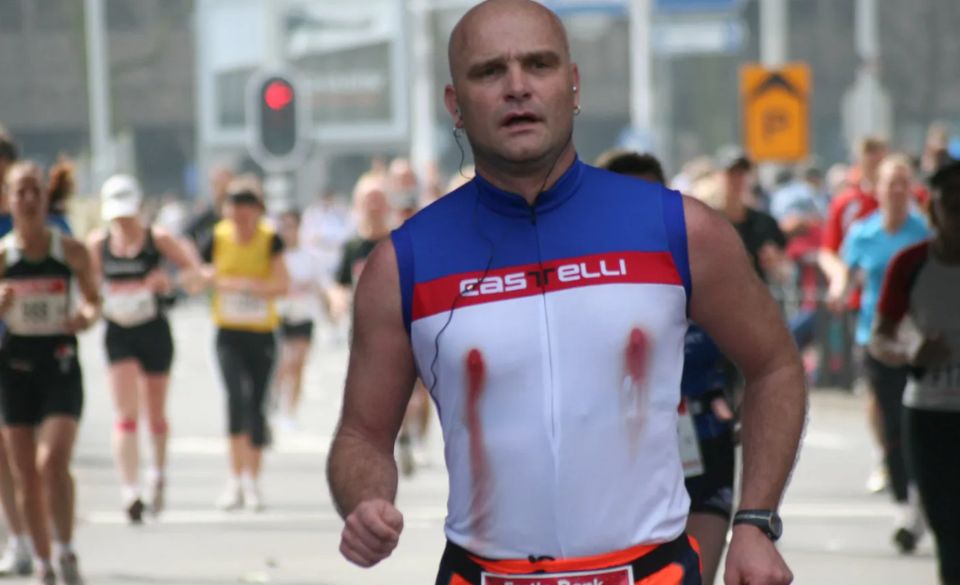
Chafing Meaning – A Complete Guide To Chafing
Page Contents
Chafing is a common skin rash caused by repeated irritation whether it is skin-on-skin or skin-on-clothing contact. All people are affected by chafing, from top athletes to breastfeeding mothers. Luckily there are many ways to help prevent and avoid this irritating rash as well as treat it without spending too much money or time. In this article “Chafing Meaning – A Complete Guide To Chafing”, we will tackle the questions
– What Is Chafing
– What Causes Chafing
– Most Common Areas Affected By Chafing
– How To Prevent Chafing
– how To Treat Chafing
What Is Chafing
Excessive rubbing between bodily parts or against another surface, such as clothes, can irritate the skin and produce chafing. A typical side effect of walking or running is chafing in the inner thighs. People who are overweight or who have exceptionally developed muscles, such as long-distance athletes, are frequently at a higher risk.
Another cause of chafing is friction between the skin and clothes. For instance, nipple chafing, which may cause excruciating pain and suffering, is a common problem among runners. High levels of moisture, such as those found in the thighs, groin, and underarms, can make chafing more noticeable because they cause the skin to stick to itself more than when it is dry.
Additionally, chafing may be immediately and easily made worse by sand and other particles that adhere to the skin or get into garments. Chafing meaning the skin starts to hurt after repeated rubbing, which results in a moderate, red rash. Serious cases of chafed skin may occasionally enlarge causing swelling, bleeding, or crusting.
What Causes Chafing
The skin plays a crucial part in preserving and safeguarding your general health, don’t forget that the skin is actually your largest organ. Your skin is resilient and tough enough to shield your interior organs from physical harm, pathogens, and heat. Chafing meaning the skin cells can get overworked to the point where they deteriorate, just like everything else.To avoid rubbing and chafing, the skin has to be clean, dry, and covered with the correct amount of natural oils or lotion. Rubbing repeatedly, when accompanied by wetness, increases skin’s susceptibility to deterioration.
Some common activities that cause chafing are endurance sports. Along with other sports that include sweating and repetitive bodily motions, biking and running are two hobbies that contribute to chafing. Chafing may occur on athletes anytime clothes or skin brushes against the
skin.
Another common cause for infants and toddlers is diapers. Chafing on the bottoms can be brought on by prolonged contact with urine or excrement as well as inadequate airflow. Which is a reason to change them frequently.
Breastfeeding is also an unfortunate way that you could possibly get chafing. Chafing meaning,
repeated movement and skin-on-skin contact resulting in irritation.
Clothing that does not fit properly could be another cause. If your bra strap, waistline, or sleeves
continually irritate your skin, you may chafe.
Most Common Areas Affected By Chafing
The most sensitive areas that are most vulnerable to friction are often the inner thighs, armpits, under the breasts, and nipples. For example, people’s thighs frequently brush against one another when jogging or simply walking, and clothing frequently rubs across their nipples.
Chafing can happen anywhere on the body where there is skin on skin or skin on clothing contact. Although it is more prevalent in particular places. Additional areas where chafing is common are the feet, butt, groin, upper arms, and butt.
How To Prevent Chafing
Chafing may be avoided in a number of methods, all of which are simple and pain-free. For instance, putting anything between your skin and the garments you’re wearing helps prevent chafing. Because petrolatum will add a layer of protection to the skin, I would advise utilizing a cream that contains it.
Deodorant can also serve as a chafe-prevention barrier. Deodorant can be applied to the inner thighs and groin as well as other chafed areas. Look for an odorless deodorant that contains aloe vera and other natural chemicals.
Similar to creams with petroleum or deodorant you may also moisturize and lubricate your skin with products such as shea butter or coconut oil. These products may also calm your skin because they have anti-inflammatory characteristics. These characteristics will definitely help with preventing chafing.
There are also sweat-absorbing powders you use specifically for anti-chafing available on the market.
Another simple way to avoid chafing and reduce friction and irritability is wearing clothing that is seamless, tagless and composed of synthetic fabrics. Seams and tags on clothing are common areas that rub and irritate your skin causing chafing, Chafing meaning the red rash you develop, so by removing them you lessen your chances.
Using items like patches or tape on the nipples to minimize friction is a simple approach to avoid nipple chafing.
Keep your nipples dry, clean, and free from irritating materials if you’re breastfeeding. Search for gentle breastfeeding bras. Some have breastfeeding pads integrated. To assist in absorbing additional moisture, you can also buy reusable or disposable pads that you can put within your bra cups.
Wear natural moisture-wicking clothing when working out to help avoid and absorb perspiration. Among the popular fabrics that wick away moisture are merino wool, polyester, and nylon.
Chafing may also be avoided and prevented by taking off wet and sweaty clothing after a hard workout or training. This is due to the fact that damp clothing adheres to your body more and is therefore more prone to brush against your skin.
After swimming, remove your swimsuit as soon as possible to avoid keeping the tight, moist fabric on your skin.
How to Treat Chafing
Chafing will go away in a few days if you stop the activity that resulted in the chafing. If you are unable to completely stop that activity then using protective measures while engaging in the activity will help prevent worsening or prolonging the chafing.
Additionally, you should leave the region exposed to air while you sleep to allow the skin to recover while you sleep.
Similar to preventing it, products like petroleum jelly, shea butter or lotion, and aloe vera can be used between cleanings until the skin has healed to continue moisturizing the area. Also, these products, especially shea butter, have an anti-inflammatory effect and aloe vera is known to help soothe some pain caused by chafing.


